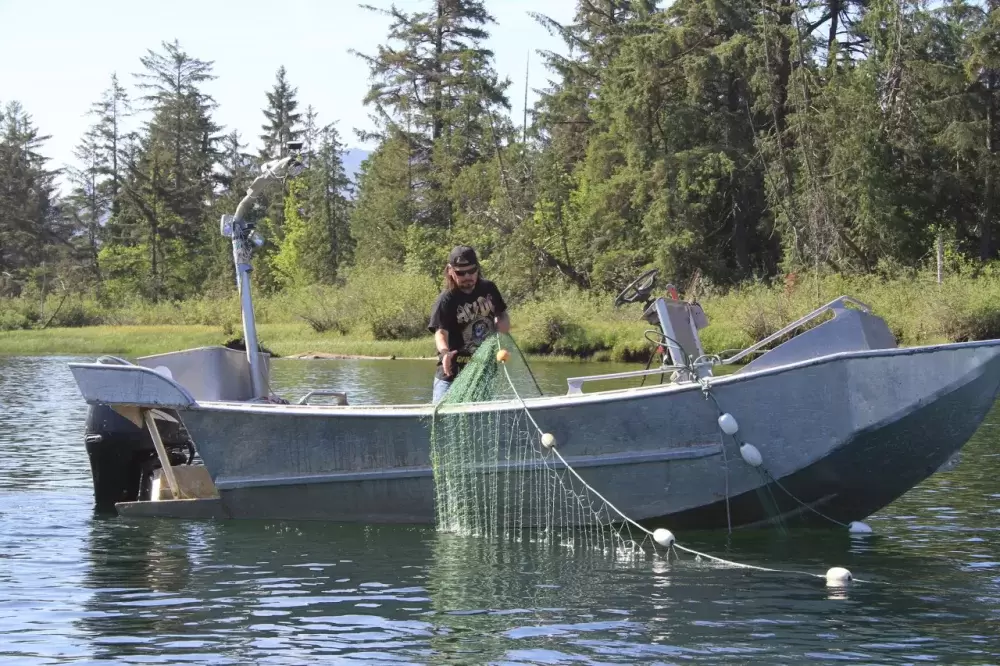As much as 95 per cent of the food Vancouver Island residents eat is shipped in from elsewhere, a supply that could run out in a matter of days if access is cut off.
But this figure, which has been reported by the Capital Region Food and Agricultural Initiatives Roundtable, isn’t sustainable for our health, preserving local heritage or mitigating environmental damage, according to those behind a project being developed to inform the public of local food sources.
A food asset mapping initiative is underway for the Alberni Valley to identify important sources of sustenance that can be used by the public and policy makers. With funding from the Social Sciences and Humanities Research Council of Canada, a team of researchers from Simon Fraser University and the University of British Columbia are looking to expand the concept of food assets beyond grocery stores, food banks and community gardens. The project is formally titled Our Home, Our Food, Our Resilience: A Citizen Science Approach to Food Asset Mapping and New Frontiers in Ecological Heritage Planning in Canada.
Dr. Tammara Soma of SFU’s School of Resource and Environmental Management is the project’s lead investigator. She says the Alberni Valley food asset map is designed to provide more information than where stores and food banks are located.
“When I think of food assets, I think of culture, I think of spirituality, I think of identity,” she said. “For different communities, a place where you can smoke the fish is very important, or process the fish. That’s currently not identified.”
For the Alberni Valley project, a group of “citizen scientists” are provided with cameras to document food source locations and narrate a story about what is, or used to be, on the site. This information will be accessible through an interactive online map of the Alberni Valley, which is set to be launched in conjunction with a photography exhibit from the project in the fall.
“We feel that it’s important to identify these important assets [so] that people can appreciate it, they can protect it, and they can also invest in it,” explained Soma. “For example, say one particular site was a very important place where community members used to fish or used to hunt, but that land right now is under development.”
Soma is from a Sundanese ethnic tribe on the west side of Java, which is the most populated island in Indonesia.
“In my culture, I was told by my parents from at time that I was a baby, ‘Eat every single grain of rice, if you don’t finish it, the rice will cry’,” she said. “Our identity is very much connected to rice because that’s what our people eat and why it’s so important to our culture for survival.”
But when she moved to Canada, Soma was shocked by the amount of food that regularly gets wasted.
“When food becomes a commodity and you lose that kind of cultural element, that spiritual element to the land and to the food, it’s very easy to waste, to discard, and to just pave over places and spaces that should actually be protected,” she said.
For this reason the project seeks Nuu-chah-nulth perspectives on local sources of food, including the cultural history of where items like berries, fish and plants were harvested.
Besides its importance to First Nations heritage, a growing collection of research is pointing to the nutritional benefits of eating traditional food from the immediate region. In October dietician Rachel Dickens gave a presentation to the Council of Ha’wiih Forum on Fisheries, stressing the value of eating locally acquired fish, berries and plants, which provide a healthy supply of protein, iron, fibre and omega-3 fatty acids. Dickens emphasized that such staples can decrease the risk of obesity, heart disease and diabetes.
“It’s so much healthier, not processed, no additives, no preservatives,” said Matilda Atleo, community health promotion worker for the Nuu-chah-nulth Tribal Council, who accompanied Dickens in her presentation. “And you know where it’s been grown.”
Before coastal First Nations became dependant on the processed food found in grocery stores, the traditional diet consisted of a relatively low amount of sugar, said Dickens. The refined flour commonly used in pastries and white bread was also not consumed, but health statistics indicate that the transition to a more industrialised diet has taken its toll on First Nation communities.
The life expectancy of B.C.’s Aboriginal people is 73 – a decade shorter than others in province, with higher rates of diabetes and heart disease, reports the First Nations Health Authority. Across Canada obesity among off-reserve Indigenous people was 26.6 per cent, compared to the 22.7 per cent national average, according to a survey released by Statistics Canada in 2006. The on-reserve rate was 36 per cent of adults, and even higher among children under 9.
“I think our people right now are having such challenges because they don’t have the resources,” said Atleo, noting that the community distribution of salmon was less for some nations last year due to restrictions to protect endangered West Coast stocks. “Some nations do have distribution events where they bring the truck full of salmon, whereas some nations don’t have that. Some people struggle.”
The results of the Alberni Valley food asset mapping project will appear as a chapter in an SFU doctoral dissertation, as well as appearing in a photography exhibit and an online interactive map of the region. Similar projects are also underway in Vancouver and Terrace, B.C.







